Monday, September 14, 2015
The 2004-05 NHL Lockout
When the 2004 World Cup of Hockey concluded on September 14th, 2004, it was the last hockey at the top professional level that would be played in North America for over a year.
While Canada was still celebrating it's World Cup championship, the collective bargaining agreement (CBA) between the NHL and the NHL Players Association expired on this date in 2004, prompting the owners to lock out the players until a new CBA that addressed the owners financial concerns. The owners were spending 76% of their revenues on player salaries at the time and, as a group, lost $273 million during the 2002-03 season.
The start of the season was lost as the two sides failed to reach an agreement. The two sides continued to negotiate with some progress made, but eventually on February 16th, 2005 the league canceled the remainder of the season, ensuring the Stanley Cup would not be awarded for the only time since 1919. It was the first time a major professional sports league would cancel an entire season because of a labor dispute.
Progress was finally made in late March when an upper and lower limit on team payrolls was proposed by the NHLPA, which the NHL found to be a workable idea, which was finally hammered out on July 13th of 2005 and approved by the players on July 21st, with 87% of the vote, and unanimously by the owners the following day, officially ending the lockout.
The final agreement guaranteed the players 54% of total NHL revenues in salary and a $39 million salary cap, with a minimum of approximately $23 million, for the first year of the new agreement. In addition, all current contracts were rolled back 24%, no single player could earn more than 20% of his team's total payroll, a revenue sharing plan were the top ten clubs would contribute to a pool split among the bottom ten clubs, unrestricted free agency eventually being reduced to age 27 rather than the prior age of 31, a cap on the size of entry level contracts and a much higher minimum salary than before.
While the game was getting revamped financially, the rules were also given serious scrutiny, and two days of meetings led by Brendan Shanahan, "The Shanahan Summit" resulted in ten recommendations to the NHL and NHLPA that led to several major rules changes when the game returned from the lockout.
Tie games were gone, now replaced by a shootout. Zero tolerance for hooking, holding, tripping, slashing, cross-checking and interference was now the norm. The center red line was done away with concerning two-line passes, goaltender equipment was made smaller and the area where goaltenders could play the puck behind the goal line was reduced. The offensive zones were made slightly larger by moving the blue lines closer together, the tag-up offside rule as reinstated and anyone shooting the puck over the glass in their defensive zone would receive a delay of game penalty. Finally, any player who instigates a fight in the last five minutes of a game would face a game misconduct and a one-game suspension, which would double with each additional incident, as well as a fine for their coach.
There was also talk in Canada about what to do with the Stanley Cup that season, with many off-the-wall proposals, but some ideas that honored the original spirit of the cup to be awarded to "the leading hockey club in Canada" and featuring either a playoff with the championship winning clubs from various leagues at various levels or a knockout competition, similar to the FA Cup in England, open to any and all who could field a team.
While the NHL season was lost due to the labor dispute, that did not stop the players from playing, as many younger players were either assigned to or remained at the American Hockey League affiliate of their NHL clubs, while quite a number of NHLer's found work in Europe, playing in leagues from Great Britain to Russia and from Norway to Italy.
For the next week, we will revisit the lockout of 2004 and tell the story of some of those players.
A total of 388 members of the NHLPA played in Europe during the 2004-05 season in a variety of leagues and countries. 43 union members chose Switzerland for the season, including Martin St. Louis, Daniel Briere, David Aebischer, Jose Theodore and Alex Tanguay, while Joe Thornton, Niklas Hagman and Rick Nash helped HC Davos to the Swiss Championship.
Hagman, Nash and Thornton celebrating
their Swiss championship title
In Slovakia, the late Pavol Demitra won the scoring title for Dukla Trencin and Miroslav Satan was the playoff MVP, leading Slovan Bratislava to the title. Michal Handzus, Vladimir Orzagh and Richard Zednik also played in Slovakia on the same forward line for Zvolen.
Pavol Demitra leaving others in his wake after returning home to compete for Dukla Trencin
Daniel Alfredsson, P. J. Axelsson, Sami Salo, Sami Pahlsson and Christian Backman helped the Frolunda Indians to the Swedish Championship while Henrik Zetterberg won the scoring title for Timra IK. Peter Forsberg, Markus Naslund, Adrian Aucoin, Daniel Sedin and Henrik Sedin all skated for MODO, while Mike Knuble, Brendan Morrison and Kristian Huselius played in Linkoping and Zdeno Chara joined Färjestads BK. In all, 75 NHL players skated for clubs in Sweden that season.
Daniel Alfredsson met up with a familiar NHL foe, Zdeno Chara in Sweden's Elitserien
Ales Hemsky helped Pardubice win the championship, while Milan Hejduk and Jan Bulis finished second and third in the scoring race among the 51 players who spent time in the Czech league. Other notable players were Martin Straka and Martin Rucinsky.
Ales Hemsky battles for HC Pardubice
Moscow Dynamo won the Russian championship with Maxim Afinogenov, Artem Chubarov, Pavel Datsyuk, Andrei Markov and Sergei Samsonov on the roster. Meanwhile, the owners of Ak Bars Kazan tried to win the Russian championship in honor of Kazan's 1000th anniversary and took the unique opportunity to sign numerous NHL players, including Dany Heatley, Darius Kasparitits, Nikolai Khabibulin, Ilya Kovalchuk, Alexi Kovalev, Slava Kozlov, Vincent Lecavalier, Michael Nylander and Brad Richards, only to be eliminated in the first round of the playoffs. Jaromir Jagr found a home with Avangard Omsk, helping them to the European Champions Cup. In all, 78 NHL players skated in Russia that season.
2004-05 Russian champions, Dynamo Moscow
The 45 NHL players who competed in Finland were not the key to success, as Sami Kapanen, Olli Jokinen, Vesa Toskala, Tomas Vokoun, Kimmo Timonen, Miikka Kiprusoff, Duane Roloson and Saku Koivu all played in Finland, but Karpat Oulu won the championship after a dominant season with only one NHLer, Janne Niinimaa, on the roster.
Janne Niinimaa while with Finnish title winners Karpat
The German DEL hosted Eirk Cole, Nathan Dempsey, Mike York, Nick Schultz and Doug Weight among 22 players from the NHL.
Doug Weight suited up for the Frankfurt Lions
Other countries that had NHL talent for the season were Italy (Steve Rucchin and Stephane Quintal), Latvia, (Karlis Skrastins, Sergei Zholtok and Darby Hendrickson), France (Steve Reinprecht), Great Britian (Eric Cairns and Nick Boynton), Hungary (Rob Niedermayer), Denmark (Todd Simpson) and Norway (Scott Hartnell and Mark Bell).
Former Minnesota Wild teammates, Darby Hendrickson and Sergei Zholtok prior to Zholtok sadly passing away during a game in Belarus
The phenomenon of NHL players finding homes in the various European leagues resulted in a recommended book on the subject, "Away Games: The Ultimate Hockey Road Trip through Europe with the NHL's Best" by Laura Sullivan.
Other NHL veterans chose to play in the minor leagues in North America, such as the UHL and ECHL, while many younger players spent the season in the American Hockey League playing for their parent club's top minor league affiliate, such as AHL leading scorer and MVP Jason Spezza.
In addition to the many NHL players finding places to play all season long, the 2005 World Junior Championship provided a stellar field of teams, bolstered by top young players, several of whom would have normally been active in the NHL at the time. Future NHL regulars Sidney Crosby, Jeff Carter, Shea Weber, Mike Richards, Ryan Getzlaf, Dion Phaneuf, Alexander Ovechkin, Evgeni Malkin, Alexander Radulov, Sergei and Andrei Kotsitsyn, David Krejci, Andrej Mezaros, Jaroslav Halak, Nicklas Grossmann, Loui Ericksson, Cory Schneider, Ryan Suter, Drew Stafford, Ryan Callahan and Phil Kessel all played in Grand Forks, North Dakota that year in what is regarded as the best collection of talent the World Juniors has ever seen.
Sidney Crosby squaring off against Alexander Ovechkin at the 2005 World Junior Tournament
The net effect of this worldwide shuffling of the deck of players gave rise to several opportunities for the hockey jersey collector. With the anger over the lost season and resulting decrease of interest in hockey, prices were down and several opportunities presented themselves to pick up sweaters at quite low prices.
With many name players skating for European or minor league clubs, new opportunities to add colorful and unusual jerseys to ones collection like never before suddenly became available. We here at Third String Goalie will spend the rest of the week sharing our "Lockout Collection" of jerseys from the 2004-05 season. Look for jerseys from Russia, Sweden, the AHL and the 2005 World Juniors.
Today's video section features videos from from Molson Beer, ESPN and some seriously depressed Canadians.
Labels:
Lockout 2004
Subscribe to:
Post Comments (Atom)


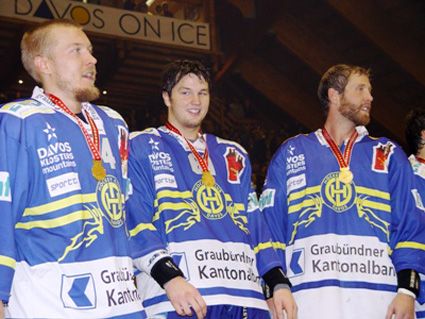
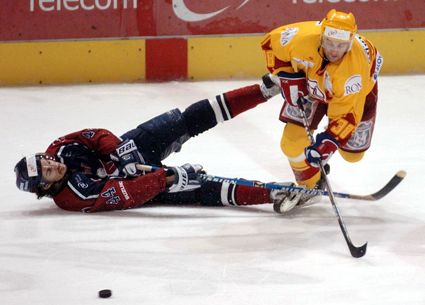
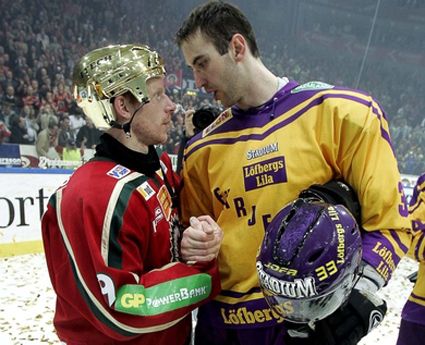
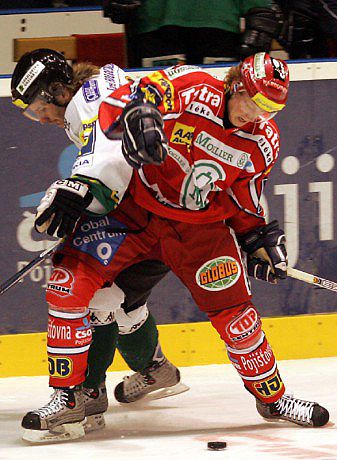


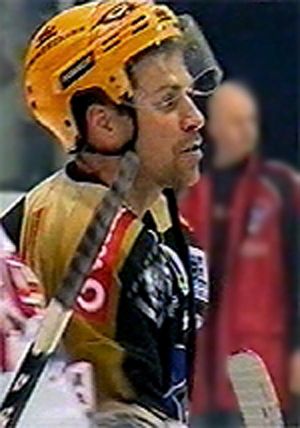
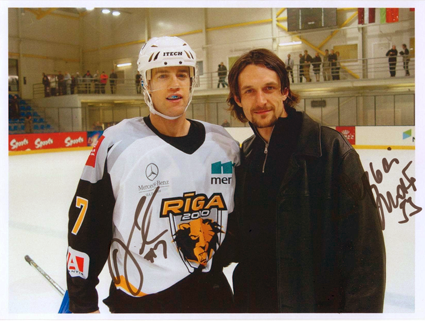
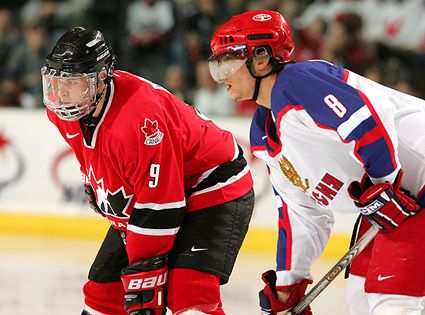










No comments:
Post a Comment
We welcome and encourage genuine comments and corrections from our readers. Please no spam. It will not be approved and never seen.